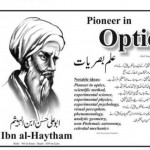- This topic has 12 replies, 7 voices, and was last updated 7 years, 10 months ago by
 prakash jat.
prakash jat.
-
AuthorPosts
-
-
December 31, 2015 at 1:00 am #28962
 prakash jatParticipant
prakash jatParticipantwill optiwave group develop mimo-fso component in optisystem ?
-
December 31, 2015 at 1:17 am #28963
 alistuParticipant
alistuParticipantHi Prakash,
Have you checked OptiSystem 14 to see if more components regarding MMF and what you are looking for are available? I haven’t installed it yet and no “new features” report by Optiwave will probably be available until the end of the holidays, so I suggest you check it yourself if it is possible for you.
Regards
-
December 31, 2015 at 1:28 am #28964
 prakash jatParticipant
prakash jatParticipantHi Alistu,
ya, i checked there is no mimo-fso component -
January 3, 2016 at 10:56 pm #28981
Sushank Chaudhary
ParticipantGood Idea for New Release of OptiSystem !
-
January 11, 2016 at 1:36 am #29122
 prakash jatParticipant
prakash jatParticipanthi damian sir
we are hoping for new add of mimo-fso component to optisystem
-
May 6, 2016 at 11:55 pm #38976
 umer ashraf waniParticipant
umer ashraf waniParticipantu can create this using the existing blocks
https://www.google.co.in/url?sa=t&rct=j&q=&esrc=s&source=web&cd=1&cad=rja&uact=8&ved=0ahUKEwjd2Py8iMfMAhWQHo4KHRNrCncQFggcMAA&url=http%3A%2F%2Farxiv.org%2Fabs%2F1502.00365&usg=AFQjCNFtAP-etnERcDAYD_l8fk9cQta09w
https://www.google.co.in/url?sa=t&rct=j&q=&esrc=s&source=web&cd=2&cad=rja&uact=8&ved=0ahUKEwjd2Py8iMfMAhWQHo4KHRNrCncQFggnMAE&url=http%3A%2F%2Fcictr.ee.psu.edu%2Ffacstaff%2Fkavehrad%2FPapers%2FJCM-490.pdf&usg=AFQjCNGjTXIpE0Liovf9egko-AfRn5celQ
https://www.google.co.in/url?sa=t&rct=j&q=&esrc=s&source=web&cd=3&cad=rja&uact=8&ved=0ahUKEwjd2Py8iMfMAhWQHo4KHRNrCncQFggwMAI&url=http%3A%2F%2Fcdn.intechopen.com%2Fpdfs-wm%2F39689.pdf&usg=AFQjCNFAzRtO4DsfcOBV9Jy_6einJ1zLpw
https://www.google.co.in/url?sa=t&rct=j&q=&esrc=s&source=web&cd=6&cad=rja&uact=8&ved=0ahUKEwjd2Py8iMfMAhWQHo4KHRNrCncQFghKMAU&url=https%3A%2F%2Fwww.osapublishing.org%2Fabstract.cfm%3Furi%3DLSC-2011-LTuC3&usg=AFQjCNG8pcmGIys59pS4ezCJgzLMBir1Mg
https://www.google.co.in/url?sa=t&rct=j&q=&esrc=s&source=web&cd=8&cad=rja&uact=8&ved=0ahUKEwjd2Py8iMfMAhWQHo4KHRNrCncQFghaMAc&url=http%3A%2F%2Fweb-ext.u-aizu.ac.jp%2Flabs%2Fce-cc%2Fdata%2F2014.IEICE-Trung-published.pdf&usg=AFQjCNE6dd0Qo6IzLmpHgDocFdTm82FpsA -
May 7, 2016 at 11:39 am #38983
 Karan AhujaSpectator
Karan AhujaSpectatorHi
I would like to mention that a major performance degrading factor in free space optical communication (FSO) systems is atmospheric turbulence. Spatial diversity techniques provide a promising approach to mitigate turbulence-induced fading. The error rate performance of FSO links with spatial diversity over atmospheric turbulence channels described by the Double Generalized Gamma distribution which is a new generic statistical model covering all turbulence conditions. We assume intensity modulation/direct detection with on-off keying and present the BER performance of single-input multiple-output (SIMO), multiple-input single-output (MISO) and multiple-input multiple-output (MIMO) FSO systems over this new channel model.
I hope this will be of some help
Regards -
May 7, 2016 at 11:41 am #38984
 Karan AhujaSpectator
Karan AhujaSpectatorAlso i want to add that To mitigate the deleterious effects of scattering and turbulence, multiple transmitters and receivers can be used. Hence, it would be possible to benefit from spatial diversity and receive multiple independent copies of the same signal. The effectiveness of Multiple-Input Multiple-Output (MIMO) systems in combating the lognormal amplitude fading has been demonstrated. However, little effort has been
made to analyze the possible excess gain obtained using a MIMO system to ameliorate the impact of phase-front distortion . We may consider both amplitude and phase distortions and show how performance is degraded compared to an Additive White Gaussian Noise (AWGN) channel. Then, using average Bit Error Rate (BER) as a performance metric, possible improvements achieved using a MIMO communications scheme is investigated.
Hope this will help. I will attach a link of one paper. This may help
https://www.osapublishing.org/abstract.cfm?uri=LSC-2011-LTuC3
Regards -
May 8, 2016 at 1:56 am #38990
 burhan num mina llahParticipant
burhan num mina llahParticipantHello Praksh,
As far as your question is concerned i would like to mention that in recent years, Gamma-Gamma fading has become the dominant fading model for FSO links because of its excellent agreement with measurement data for a wide range of turbulence conditions. However, in contrast to RF communications, the analysis techniques for FSO are not well developed and prior work has mostly resorted to simulations and numerical integration for performance evaluation in Gamma-Gamma fading.The pairwise error probabilities of single-input single- output (SISO) and multiple-input multiple-output (MIMO) FSO systems with intensity modulation and direct detection (IM/DD) as generalized infinite power series with respect to the signal- to-noise ratio.
For numerical evaluation these power series are truncated to a finite number of terms and an upper bound for the associated approximation error is provided. The resulting finite power series enables fast and accurate numerical evaluation of the bit error rate of IM/DD FSO with on-off keying and pulse position modulation in SISO and MIMO Gamma-Gamma fading channels.
Furthermore, to extend well-known RF concepts of diversity and combining gain to FSO and Gamma-Gamma fading. In particular, we provide simple closed-form expressions for the diversity gain and the combining gain of MIMO FSO with repetition coding across lasers at the transmitter and equal gain combining or maximal ratio combining at the receiver.Here is a link of a paper that you can consult It may help you http://ieeexplore.ieee.org/xpls/abs_all.jsp?arnumber=5336863&tag=1
Regards
Burhan -
May 8, 2016 at 2:00 am #38991
 burhan num mina llahParticipant
burhan num mina llahParticipantHello Praksh,
Here are few more links for some papers you may consult. It will surely help you.
https://www.osapublishing.org/oe/fulltext.cfm?uri=oe-21-13-15213&id=258084
http://link.springer.com/chapter/10.1007%2F978-3-642-11284-3_7#page-1
http://www.sciencedirect.com/science/article/pii/S0030401815000176I would like to mention that We study the average capacity performance for multiple-input multiple-output (MIMO) free-space optical (FSO) communication systems using multiple partially coherent beams propagating through non-Kolmogorov strong turbulence, assuming equal gain combining diversity configuration and the sum of multiple gamma-gamma random variables for multiple independent partially coherent beams. The closed-form expressions of scintillation and average capacity are derived and then used to analyze the dependence on the number of independent diversity branches, power law α, refractive-index structure parameter, propagation distance and spatial coherence length of source beams. Obtained results show that, the average capacity increases more significantly with the increase in the rank of MIMO channel matrix compared with the diversity order. The effect of the diversity order on the average capacity is independent of the power law, turbulence strength parameter and spatial coherence length, whereas these effects on average capacity are gradually mitigated as the diversity order increases. The average capacity increases and saturates with the decreasing spatial coherence length, at rates depending on the diversity order, power law and turbulence strength. There exist optimal values of the spatial coherence length and diversity configuration for maximizing the average capacity of MIMO FSO links over a variety of atmospheric turbulence conditions.
Hope this will surely help.
Regards
Burhan -
May 9, 2016 at 12:47 am #39009
 Hamza Ali Abbas KhanParticipant
Hamza Ali Abbas KhanParticipantHello
I agree that the average capacity performance for multiple-input multiple-output (MIMO) free-space optical (FSO) communication systems using multiple partially coherent beams propagating through non-Kolmogorov strong turbulence, assuming equal gain combining diversity configuration and the sum of multiple gamma-gamma random variables for multiple independent partially coherent beams.
Also i would like to add that in contrast to RF communications, the analysis techniques for FSO are not well developed and prior work has mostly resorted to simulations and numerical integration for performance evaluation in Gamma-Gamma fading.The pairwise error probabilities of single-input single- output (SISO) and multiple-input multiple-output (MIMO) FSO systems with intensity modulation and direct detection (IM/DD) as generalized infinite power series with respect to the signal- to-noise ratio.
Hope this will help you.
Thanks -
June 7, 2016 at 11:44 pm #39735
 prakash jatParticipant
prakash jatParticipanthi nuzhat
are you working on mimo also ? , are you developed any model(mimo with correlated channel) in matlab? if yes then we can interface it with optisystem
-
-
AuthorPosts
- You must be logged in to reply to this topic.

